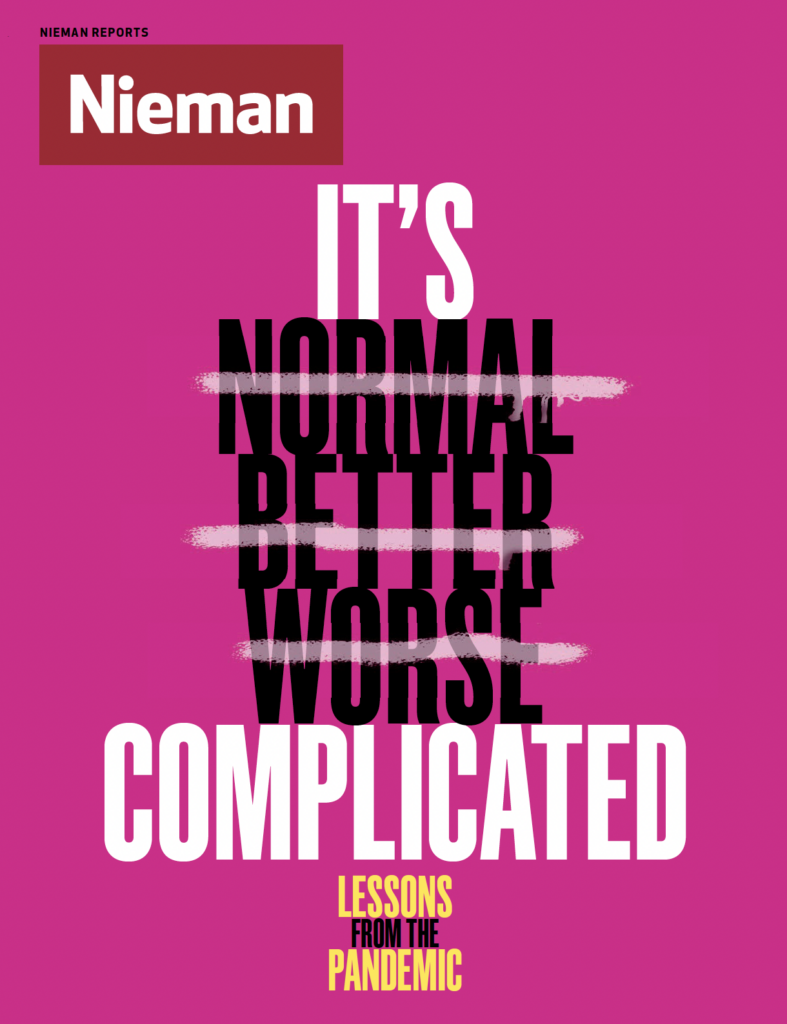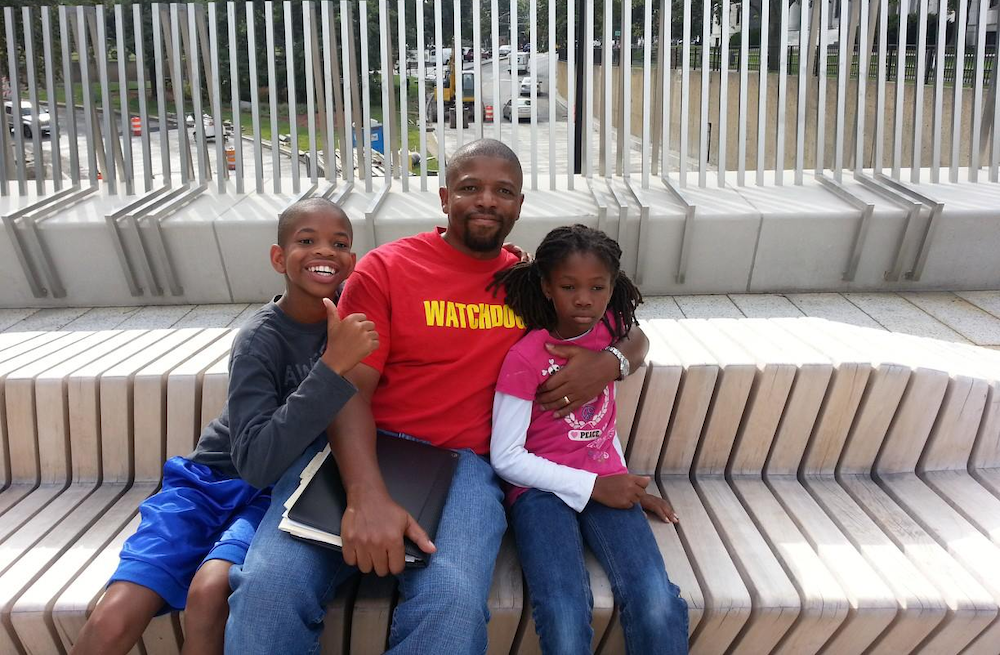
Hope that the coronavirus is finally being brought under control has prompted plans for a return to “normal.” But can, or should, journalism return to a pre-pandemic “normal?” Across newsrooms, the way we once covered education, sports, food, politics — any beat — is unlikely to be sufficient for the new moment we are entering.
What are the lasting lessons of this time? And how should we do journalism differently moving forward? These are the questions Nieman Reports explores in our essay series, Lessons from the Pandemic.
Or my son and I would show up at a construction site or meet developers on a plot of land where trees had recently been clear cut or at a model home. I can’t remember precisely, but Kyle was about 1 year old, give or take a few months.
Not once did he cry during any of our trips or as I conducted an interview. (I don’t think I would have been as lucky a couple years later when my daughter, Lyric, arrived. She was a fussy baby and made her presence known everywhere.) But every day I wondered when my editors would find out about what I had been doing and what they would say if they ever did.
I never told them. And apparently no one called into the newsroom asking why a young journalist was bringing a baby to his interviews. Maybe because I got all my work done on time and well enough on my real estate and housing beat that it raised no suspicions, even though twice a week I wouldn’t show up in the office until well after lunch.
On those days, my wife was trying to put in a few hours with the school district after having left her teaching career when we had children. We couldn’t afford childcare and had to make do, which meant Kyle had to come with me on the back roads of Horry County and to high-dollar developments and the offices of bankers and officials who could help me understand the latest sales figures and the relationship between the 10-year treasury and mortgage rates.
That juggling forced me to learn the rhythm of the Myrtle Beach area’s business community better. I figured out when it would be easiest to catch a CEO directly – often between 8 a.m. and 8:30 a.m. when the secretary would be preoccupied with other things, and the CEO would answer the phone himself or be moseying through the lobby alone – an insight I used even after those days of dragging Kyle to interviews had ended.
This was in the aftermath of the Sept. 11 attacks, when newsrooms throughout the country began beefing up security and rethinking how journalists did their jobs in response to an unprecedented event. I never did tell my editors about juggling my family responsibilities that way because I felt guilty, as though I had done something wrong, broken some unspoken code.
Getting my job done well wasn’t enough. I had to get it done well in a particular way, a traditional one even though I had proven that tradition and excellence weren’t always the same.
I’m reminded of that period of my career now because in the coming months, many journalists and most newsrooms will be facing something similar — trying to figure out what to do in the aftermath of a once-in-a-century pandemic that upended everything.
Should the doors to the downtown offices be flung back open and everyone expected to saunter back in like a family of dutiful ants?
Or should remote work remain the norm?
For me, how we end up answering such questions isn’t as important as why.
For all the harm covid-19 has caused – and the harm has been immense – it forced us to rethink everything. I’m hoping in the coming months, everything we do will still be under intense examination. I imagine had we been regularly working via Zoom when I was taking Kyle to interviews, I would not have felt the need to hide my struggles with juggling family and work responsibilities.
During covid, we saw kids and pets sashay in the background of live TV interviews and found it cute, not disconcerting. As long as the journalist got the job done well, no one complained. It was understood that a journalist wasn’t just a journalist but also a parent or partner or cat sitter or dog lover or someone who wore pajamas and slippers, too.
We got to know journalists beyond the byline or made-up face on the screen, sometimes in ways that impressed us, sometimes in ways that depressed us. It was sometimes inspiring, sometimes messy. In short, it was … real. Journalists were less packaged.
Going forward, I hope newsrooms find a way to continue cultivating that new norm rather than feeling the need to re-establish the pre-covid norm of having a kind of wall between the personal and professional; we all know real life has always been messier than that. Let’s face it. Being a journalist has become a 24/7 job. We are on all the time, even when we aren’t chasing a lead or scanning court documents to verify a fact for an investigative report.
I don’t think that’s going to change. It doesn’t have to. It’s hard to turn your brain off from the news, whether in your local community as you hit the locals’ favorite for lunch or as you scroll your Twitter timeline. But in order to make that work, to ensure a healthier industry filled with healthier people, the whole of the journalist must be taken into account in ways that weren’t always true pre-covid.
Newsroom leaders need to recognize that almost on a dime we were able to transform how we did our jobs — because we had to. More forthrightly recognizing and dealing with the stress this job can have on our mental health has been a major step forward. There seems less of a tendency to force everyone to just grin and bear whatever they face and more of an acknowledgement that we must think outside of traditional expectations. I suspect that when the doors of newsrooms are flung wide again, greater attempts to foster the comradery too many of us took for granted will come with it. And there’s reason to believe we won’t soon forget what we learned about the necessity of greater diversity.
My hope is that the industry will carry those lessons forward so that today’s young journalists won’t feel guilty juggling their duties as parents like I did.
Issac Bailey, a 2014 Nieman Fellow, is a journalist, race relations seminar creator and facilitator, and the author of “Why Didn’t We Riot? A Black Man in Trumpland” (Other Press, October 2020).
Lessons from the Pandemic
Hope that the coronavirus is finally being brought under control has given rise to planning for a return to “normal.” But can, or should, journalism return to a pre-pandemic “normal?” Across newsrooms, the way we once covered education, labor, theater—any beat—is unlikely to be sufficient for the moment we are entering. What are the lasting lessons of this time, and how should we do journalism differently? These are the questions to which Nieman Reports is seeking answers in our essay series, Lessons from the Pandemic.



